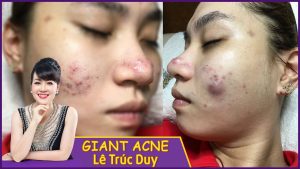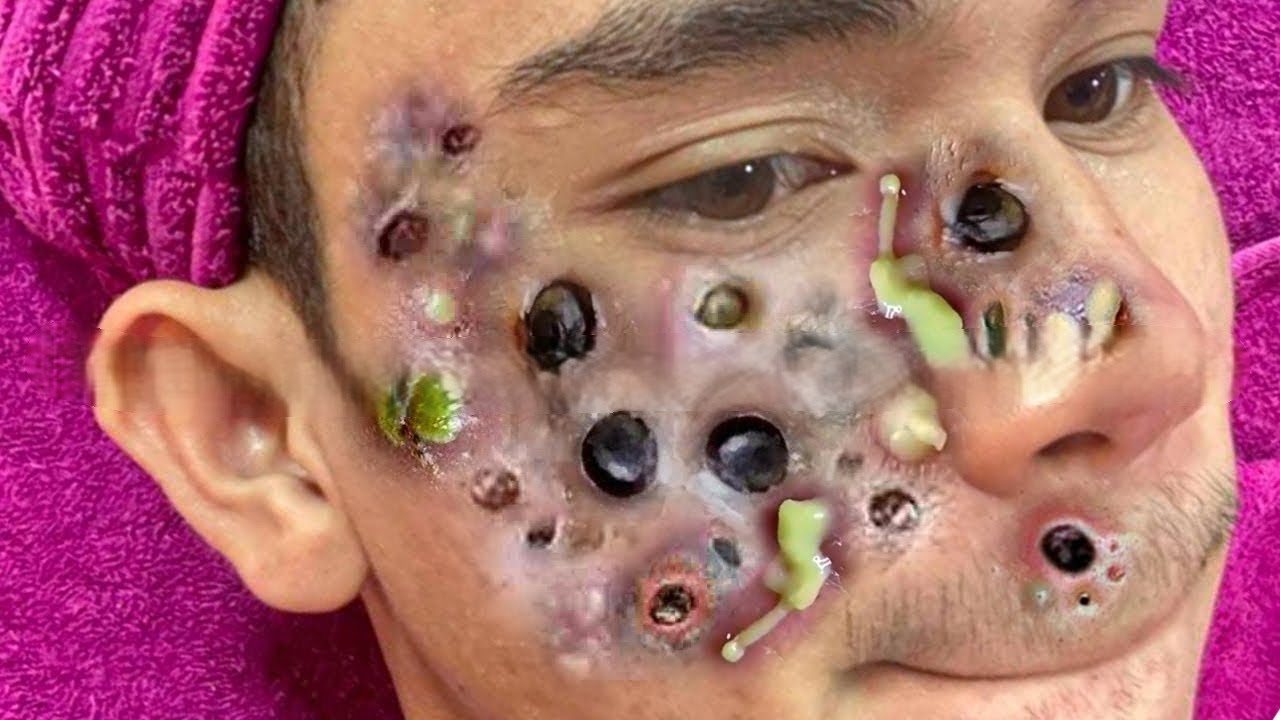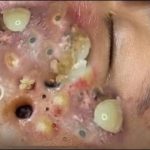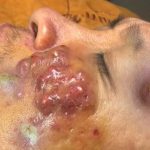What Your Acne Means By Location According to A Dermatologist
Please scroll down to watch the video.👇👇
Great question! The idea that acne location corresponds to internal health or emotional causes is a popular topic in beauty and wellness circles — especially on social media. While dermatologists don’t typically diagnose systemic issues solely based on acne location , there can be some correlations between where you break out and what might be contributing factors, such as:
- Hormonal changes
- Lifestyle habits
- Skincare practices
- Environmental exposure
Here’s a breakdown of what acne locations may suggest, according to dermatological insights and common patterns observed by skin experts.
🧠 What Your Acne Location May Mean (According to Dermatologists)
1. Forehead Acne
📍 Common Causes:
- Hair products (e.g., pomades, gels, sprays)
- Sweat trapped under bangs/headbands
- Poor pillow hygiene
- Stress
🧠 What it may mean:
Dermatologists often associate forehead acne with contact dermatitis or folliculitis caused by comedogenic ingredients in hair products (known as pomade acne ). It can also be due to friction or sweat buildup from headwear or not washing your pillowcase regularly.
💡 Tip: Switch to non-comedogenic hair products, wash pillowcases weekly, and avoid touching your face after applying hair products.
2. Cheeks Acne (Especially Lower Cheeks)
📍 Common Causes:
- Phone contact
- Hands touching the face
- Pillow/face mask friction
- Digestive issues (less commonly cited by derms)
📱 What it may mean:
This is often due to acne mechanica — acne caused by pressure, rubbing, or friction. Cell phones, masks (“maskne”), and pillowcases are major culprits. Also, if you’re touching your face frequently, bacteria can transfer and cause breakouts.
💡 Tip: Clean your phone screen daily, wash reusable face masks, and consider switching to silk pillowcases.
3. Nose & T-Zone Acne
📍 Common Causes:
- Oily skin
- Large pores
- Overactive sebaceous glands
- Poor cleansing
👃 What it may mean:
The T-zone (nose, forehead, chin) has more sebaceous glands , making it prone to oiliness and acne. Breakouts here are usually due to excess sebum production, dead skin buildup, or improper cleansing rather than internal issues.
💡 Tip: Use gentle BHA exfoliants like salicylic acid and maintain a consistent skincare routine.
4. Chin & Jawline Acne
📍 Common Causes:
- Hormonal fluctuations
- PCOS (Polycystic Ovary Syndrome)
- Menstrual cycle
- Diet (high glycemic foods, dairy)
🦴 What it may mean (according to derms):
This area is most strongly linked to hormonal acne . Many dermatologists see breakouts along the jawline and chin flare up during menstrual cycles, pregnancy, or conditions like PCOS .
🔬 Scientific Insight:
Androgens stimulate oil production, which can lead to clogged pores and acne. Blood tests for testosterone, DHEA-S, LH/FSH ratio, and insulin levels may help identify hormonal imbalances.
💡 Tip: Talk to your dermatologist about hormonal treatments like spironolactone , oral contraceptives, or adapalene.
5. Around the Mouth / Perioral Acne
📍 Common Causes:
- Toothpaste residue
- Lip balm or lip gloss
- Shaving irritation
- Topical steroid use (rare)
👄 What it may mean:
Often referred to as perioral dermatitis , this type of breakout can mimic acne but is usually more inflammatory. It may be triggered by topical irritants or overuse of heavy products around the mouth.
💡 Tip: Check your toothpaste, lip products, and facial moisturizers for pore-clogging ingredients.
6. Back & Chest Acne
📍 Common Causes:
- Tight clothing
- Sweating
- Occlusive lotions
- Hormonal factors
👕 What it may mean:
Known as bacne , these breakouts are similar to facial acne and can be caused by friction, sweat, or poor ventilation . They can also be hormonally influenced.
💡 Tip: Use body washes with salicylic acid or benzoyl peroxide , wear breathable fabrics, and shower soon after working out.
🧬 Internal vs. External Factors
While acne location can give clues, dermatologists rely more on patterns, severity, timing, and other symptoms to determine root causes. Here’s how they differentiate:
🧑⚕️ When to See a Dermatologist
You should consult a dermatologist if:
- Acne is persistent or worsening
- You have painful cysts or scarring
- You suspect hormonal causes (especially in women)
- Over-the-counter products aren’t working
A dermatologist can offer:
- Prescription treatments (topical retinoids, antibiotics, spironolactone)
- Chemical peels or laser therapy
- Bloodwork to check hormone levels
- Customized skincare routines
✨ Final Thoughts
While the “face mapping” theory (the idea that acne location reflects internal health) isn’t fully supported by science, dermatologists do recognize trends that can help guide treatment. Always consult a licensed professional before assuming acne is tied to something deeper.

Absolutely! Below is a comprehensive, dermatologist-backed breakdown of what acne in different facial areas may indicate, including scientific references , dermatological insights , and practical advice .
🧠 What Your Acne Means By Location: A Dermatologist’s Guide (With Scientific References)
You’ve probably seen the viral “face mapping” charts claiming that acne on your forehead means stress, or pimples on your chin point to hormonal issues. While these ideas are popular — especially in wellness and beauty circles — do they hold up under scientific scrutiny?
Let’s take a deep dive into what acne locations might mean according to dermatologists, supported by clinical evidence and real-world observations.
📌 Key Terminology
Before we dive in, here are some important terms:
- Acne vulgaris : The most common type of acne, caused by clogged pores, excess oil, bacteria, and inflammation.
- Hormonal acne : Acne triggered or worsened by hormonal fluctuations, often cystic and found along the jawline and chin.
- Comedones : Non-inflammatory acne lesions (blackheads and whiteheads).
- Inflammatory acne : Red, swollen pimples like papules, pustules, nodules, and cysts.
- Contact acne / acne mechanica : Caused by friction, pressure, or occlusion from objects like phones, masks, helmets, etc.
- Perioral dermatitis : An inflammatory rash around the mouth that can mimic acne.
1️⃣ Forehead Acne: Hair Products & Hygiene Habits
🔍 Common Causes:
- Hair products (pomades, gels, oils)
- Sweat buildup
- Pillowcase hygiene
- Touching face with unwashed hands
🧑⚕️ What It Might Mean:
Forehead acne is commonly linked to pomade acne — a form of comedonal acne caused by pore-clogging ingredients in hair products. It’s also influenced by acne mechanica due to friction from bangs or hats.
Dermatologist Insight:
Dr. Whitney Bowe, a board-certified dermatologist, explains that forehead breakouts are often “contact acne” from hair care products or sweat. She recommends switching to non-comedogenic products and cleansing after workouts.
📚 Supporting Research:
- James, WD et al. (2006). Andrews’ Diseases of the Skin: Clinical Dermatology. Elsevier Health Sciences.
- Thiboutot D, et al. (2009). New Insights Into the Management of Acne: An Update From the Global Alliance to Improve Outcomes in Acne. Journal of the American Academy of Dermatology.
2️⃣ Cheeks Acne: Maskne, Phones & Friction
🔍 Common Causes:
- Face masks (“maskne”)
- Cell phone contact
- Pillowcase friction
- Frequent hand-to-face contact
🧑⚕️ What It Might Mean:
Cheek acne is usually acne mechanica or irritation-induced acne . With increased mask-wearing, this has become more prevalent. The constant rubbing and trapping of moisture and bacteria leads to breakouts.
Dermatologist Insight:
Dr. Shereene Idriss, a NYC-based dermatologist, notes that cheek acne often comes from repeated exposure to dirty phone screens and masks. She advises cleaning devices daily and using breathable fabrics.
📚 Supporting Research:
- Danby FW. (2020). Facial Acne in Masks (Maskne) – Mechanisms, Prevention and Treatments. Postgraduate Medicine.
- Gollnick H, et al. (2003). Management of Acne: A Report from a Global Summit with New Insights. Skin Therapy Letter.
3️⃣ T-Zone (Nose, Chin, Forehead): Oily Skin & Clogged Pores
🔍 Common Causes:
- Sebaceous gland activity
- Poor cleansing habits
- Over-exfoliation
- Heavy skincare products
🧑⚕️ What It Might Mean:
The T-zone has more sebaceous glands , making it prone to oiliness and acne. Breakouts here are typically due to excess sebum production , dead skin cell buildup, and improper skincare routines.
Dermatologist Insight:
Dr. Hadley King, a dermatologist based in New York, emphasizes that T-zone acne is often comedonal acne , best treated with BHAs like salicylic acid and gentle exfoliation.
📚 Supporting Research:
- Zaenglein AL, et al. (2016). Guidelines of Care for the Management of Acne Vulgaris. Journal of the American Academy of Dermatology.
- Del Rosso JQ. (2010). The Role of Facial Cleansers in Maintaining Healthy Skin Barrier Function. Journal of Drugs in Dermatology.
4️⃣ Jawline & Chin Acne: Hormonal Fluctuations
🔍 Common Causes:
- Menstrual cycle
- Polycystic ovary syndrome (PCOS)
- Stress
- Diet (dairy, high glycemic foods)
🧑⚕️ What It Might Mean:
This area is most strongly associated with hormonal acne , particularly in women. These breakouts tend to be cystic, deep, and painful , and often flare before menstruation.
Dermatologist Insight:
Dr. Jennifer Chwalek, a dermatologist at Union Square Laser Dermatology, says that androgens stimulate sebaceous glands , leading to oil overproduction and acne. Blood tests may reveal elevated testosterone or insulin levels.
📚 Supporting Research:
- Tanghetti EA. (2013). The Role of Inflammation in the Pathogenesis of Acne. Journal of Cutaneous Medicine and Surgery.
- Arowojolu AO, et al. (2012). Combined Oral Contraceptives for Treatment of Acne Vulgaris. Cochrane Database of Systematic Reviews.
5️⃣ Around the Mouth: Perioral Dermatitis
🔍 Common Causes:
- Toothpaste residue
- Lip balm use
- Topical steroid misuse
- Skincare product irritation
🧑⚕️ What It Might Mean:
Often mistaken for acne, this is frequently perioral dermatitis , an inflammatory rash rather than true acne. It presents as small red bumps around the mouth and can be exacerbated by topical steroids or heavy moisturizers.
Dermatologist Insight:
Dr. Marisa Garshick, a board-certified dermatologist, warns against using thick lip balms or steroid creams near the mouth, which can trigger perioral dermatitis.
📚 Supporting Research:
- Cohen BE, Grossman ME. (1983). Perioral Dermatitis: Review of the Literature. Journal of the American Academy of Dermatology.
- Gupta AK, et al. (2002). Perioral Dermatitis: Etiology, Diagnosis, and Treatment. Dermatologic Clinics.
6️⃣ Back & Chest Acne: Occlusion & Hormones
🔍 Common Causes:
- Tight clothing
- Sweating
- Occlusive lotions
- Hormonal factors
🧑⚕️ What It Might Mean:
Back and chest acne (bacne) mirrors facial acne in pathophysiology. It can be mechanical (from tight clothes), hormonal, or bacterial.
Dermatologist Insight:
Dr. Doris Day, a dermatologist in NYC, suggests body washes containing salicylic acid or benzoyl peroxide and breathable workout clothes to prevent bacne.
📚 Supporting Research:
- Baldwin HE, et al. (2017). The Psychosocial Impact of Acne Vulgaris. Pediatric Dermatology.
- Keri JE, et al. (2008). Combination Therapy With Benzoyl Peroxide and Salicylic Acid for the Treatment of Acne Vulgaris. Journal of Drugs in Dermatology.https://www.youtube.com/watch?v=ndIW-yN1NkE
https://www.youtube.com/watch?v=KDnWjgnn0Ck


